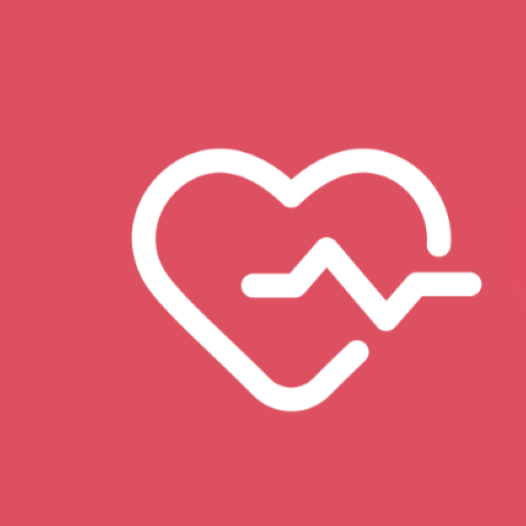Coronary artery disease (CAD) doesn’t just show up overnight; it evolves, typically due to a complex mix of genetics, lifestyle choices, and other factors. It’s a condition where the coronary arteries, the blood vessels that supply oxygen-rich blood to the heart muscle, become narrowed and hardened due to a buildup of cholesterol and other substances, a process known as atherosclerosis.
What’s worth noting is the sheer prevalence of coronary artery disease. (CAD) stands as a leading cause of death worldwide. So, What Is Coronary Artery Disease Caused By?The risk factors vary from high blood pressure, high cholesterol levels, to smoking, and extend to obesity, diabetes, and a family history of heart disease. These elements work collectively to compromise artery health over time.
It’s crucial to understand that coronary artery disease(CAD) can be largely silent until it reaches a critical point, at which symptoms like chest pain or discomfort (angina), shortness of breath, or even a heart attack may occur. But there are effective strategies you can adopt to lower your risk, and they often start with what’s on your plate.
Be sure to read this post about,What is Cabg Heart Bypass Surgery?
The Role of Nutrition in Preventing Coronary Artery Disease

When my doctor is asked, ” What Is Coronary Artery Disease Caused By?” The first thing that he says is, “The food choices I make play a pivotal role in my cardiovascular health”. Coronary Artery Disease (CAD) isn’t simply a product of genetics or bad luck; it’s often tied to what’s on my plate. Numerous studies have shown that certain diets high in processed foods, trans fats, and added sugars increase the risk of plaque buildup in my arteries, leading to CAD.
Eating my way to a healthy heart isn’t just a catchy phrase; it’s a lifestyle change that can save my life. By including a variety of fruits, vegetables, whole grains, and lean proteins in my diet, I provide my body with the essential nutrients it needs to function optimally and maintain clean, flexible arteries. Fatty fish, rich in omega-3 fatty acids, and nuts, packed with healthy fats, are friends to my heart. Antioxidant-rich choices like berries help counteract the inflammation that can harm my arteries.
Embracing a heart-healthy diet isn’t about deprivation; it’s about making smarter food choices. Swapping out salty snacks for unsalted nuts, choosing water over sugary drinks, and picking whole grain products over refined ones are simple steps with significant impact. It’s also essential to control portions, limit alcohol, and understand the components of food labels to make educated decisions that benefit my heart.
As the saying goes, ‘You are what you eat,’ and nowhere is this truer than with heart health. The transition to a heart-friendly diet can start with small, consistent steps, leading to lasting changes. Engaging with a nutritionist or using reliable online resources can help plan meals that taste great and nourish my cardiovascular system.
The Importance of Rest in Cardiovascular Health

When it comes to maintaining a healthy heart, rest is just as crucial as diet and exercise. It’s not just about the quantity of sleep, but the quality as well. Poor sleep can lead to high blood pressure and inflammation, both of which can strain your coronary arteries. Research has shown a direct link between sleep deprivation and an increased risk of heart attacks and stroke.
When you’re sleep-deprived, your body releases more stress hormones like cortisol, which can increase your heart rate and blood pressure. Consistently high levels of stress hormones can damage the coronary arteries over time. And it’s not only the nights of too few hours of sleep that can hurt your heart, but also irregular sleep patterns and sleep disorders like apnea, which interfere with the depth and restfulness of your sleep.
I recommend aiming for 7-9 hours of quality sleep per night. To achieve this, establish a regular sleep schedule, create a restful sleeping environment, and avoid stimulants close to bedtime. If you think you might have a sleep disorder, consult a healthcare professional — addressing these issues can significantly improve your heart health.
But rest doesn’t just mean sleep. Allowing yourself breaks during the day, especially if your lifestyle is hectic, can help reduce stress levels. Remember, stress can cause your body to go into a ‘fight or flight’ mode, which isn’t good for your heart when it’s a chronic state. Find activities that help you unwind, whether it’s deep breathing, meditating, or walking.
Now, transition smoothly into the next piece of the heart health puzzle: exercise. Just like rest, your body requires regular physical activity to keep your heart muscle strong and blood flowing properly. In the next section, I’ll discuss the dangers of a sedentary lifestyle and how the right kind of exercise can be a powerful ally against coronary artery disease.
Exercising Right for a Healthy Heart

If heart health were a puzzle, exercise would undoubtedly be a large piece of it. We know that the body relies on regular physical activity to maintain cardiovascular strength, but what’s often understated is the direct link between exercise, or the lack thereof, and coronary artery disease.
Sedentary lifestyles quietly open the door for a host of health problems, with coronary artery disease at the forefront. The heart muscle, like any other, needs to be worked to remain robust and efficient. Without adequate exercise, arteries can become more susceptible to plaque buildup, leading to narrowed passageways for blood to flow, which can trigger heart events.
Experts recommend a combination of aerobic exercises, such as brisk walking, cycling, or swimming, and muscle-strengthening activities a minimum of twice a week. It’s not just about the quantity though; consistency and quality of exercise matter.
Yet, many people struggle to find time for the gym or feel daunted by the prospect of a structured exercise regimen. The good news is that there are myriad ways to integrate more activity into your day, such as choosing stairs over the elevator, parking further from store entrances, or engaging in active hobbies like gardening.
Embracing these simple shifts can pave the way to a more active lifestyle, reducing the risk of coronary artery disease substantially. By making exercise an accessible and regular part of your day, you contribute significantly to the well-being of your heart.
Lifestyle Changes: Combating Coronary Artery Disease

When it comes to coronary artery disease, each choice you make can steer you toward a healthier heart. By now, you understand that a balanced diet, sufficient rest, and regular exercise are essential. But knowledge alone isn’t enough – I encourage you to act on what you’ve learned.
Making lifestyle changes isn’t just about dodging illness; it’s about enhancing your life quality. It’s empowering to know you have the power to influence your health. Start with small, manageable steps, like adding a side salad to your meal or choosing the stairs over the elevator.
Remember, you’re not alone on this path. Many have successfully adjusted their habits and have remarkable success stories. These narratives aren’t just feel-good anecdotes; they’re proof that changes can lead to significant health improvements.
If you’re ready to take control but unsure where to begin, consider a chat with your doctor. They can help you tailor a plan that fits your unique needs, limitations, and goals. Also, don’t ignore the value of support groups—people who understand your struggles and will cheer on your wins can be invaluable.
Embrace those changes with confidence, because you’re investing in a future where you’re active, healthy, and well-equipped to take on life’s challenges. It’s not always easy, but your heart—and ultimately, you—will thank you for it.

